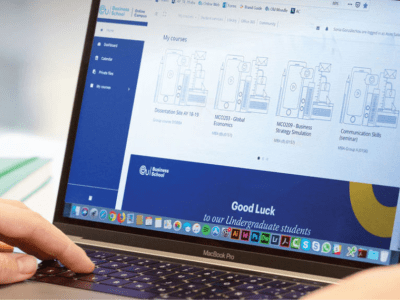The internet has removed many of the traditional barriers in relation to setting up a business. In the past, entrepreneurs needed significant amounts of capital in order to develop and market new ideas. Now, however, all that is required is a stable internet connection, a website and a viable traffic-generation strategy.
If you have been thinking of launching an online project, there’s no better time to get started! Setting up an online business is certainly not easy. The important thing to stress here, however, is that it is possible for practically anybody, irrespective of their budget, amount of free time, or previous business training.
In this post, we’re going to walk you through the process of setting up an online business on a minimal budget. Among other things, you’ll learn how to identify a viable model, build your audience and optimize your online presence moving forward.
1. Build Your Basic Infrastructure
Before you begin thinking about product development and marketing, it’s important to establish your digital infrastructure. Allocating time to tasks like refining your technology stack and project management tools, building your website, taking care of legal responsibilities, and setting up any necessary corporate frameworks, will free up your resources later on and therefore allow you to prioritize your most essential tasks.
As an online entrepreneur, there are many benefits to having a foundational understanding of digital infrastructure. While you don’t need to become fluent in a programming language, learning how to use popular online management tools and run a website will pay significant dividends, especially if you don’t yet have the resources to hire dedicated professionals.
Acquiring a working skill-set in these areas isn’t difficult. Online courses and training materials are widely available, and many popular website solutions, such as Wix, WordPress, Shopify, amongst others, enable beginners (without technical expertise) to build complex, functional platforms.
2. Pick a Business Model That Fits Your Vision
If you already know what you’re going to sell, your next task is to pick a suitable business model. Choosing the right model is essential. It will act as a vehicle through which you can display your products or services to the widest possible audience.
If you don’t yet have a concrete idea, evaluate different models to see which correspond with your temperament and skills. You can then narrow down your market research to opportunities that fit with your preferred model.
Here is a brief overview of the main online business models:
- Ecommerce – Ecommerce involves selling physical products through a website. Running an ecommerce site is one of the most resource-intensive, but also most lucrative, ways of running an online business. A developed infrastructure, encompassing product sourcing, warehouse storage, shipping and logistics, inventory management, billing, and site maintenance, are all required. Beginner-friendly tools like Shopify, BigCommerce, and Weebly, however, make it possible for entrepreneurs to build complex sites at a fraction of the cost of what it would cost to hire a professional. It is also possible to build a successful ecommerce business using third-party platforms like Amazon and Etsy.
- Affiliate marketing – Affiliate marketers promote other people’s products. Generally speaking, affiliate marketers specialize in traffic generation. They use a variety of methods, encompassing both paid and unpaid strategies, to sell products as an affiliate, receiving a fee whenever a successful purchase is made. Often, affiliate marketers will own an online asset, such as a blog or popular Youtube channel, and market third-party products as a way of monetizing their audience.
- Blogging and other forms of content creation – Content creators specialize in the production of engaging online content, usually in either written, visual, or audio formats, and its online dissemination. They may rely on a third-party platform, like Youtube, or own their own website, particularly in the form of a blog. There are numerous ways that content creators can monetize their audience, such as selling products (often referred to as “merchandise”), pitching affiliate products, selling advertising, as well as offering services.
- Informational products and courses – Informational products represent a unique business model because they are distinct from physical products and thus do not require the same kind of extensive infrastructure needed to run an ecommerce store. Online learning has grown significantly in popularity over the last several years and represents a major area of opportunity for entrepreneurs. One of the standout business success stories in this specific area is the company Masterclass.
- Services – Most online service-based businesses are usually focused on a website designed to persuade visitors to purchase a particular package. Service businesses are attractive because they do not require product creation or inventory management.
3. Find Your “Traction” Marketing Channel
Once you have built your foundational infrastructure and selected a business model through which to express your vision, you need to find your “traction” marketing channel.
The concept of “traction” is taken from the book Traction: How Any Startup Can Achieve Explosive Customer Growth by Gabriel Weinberg and Justin Mares. In it, the authors state that “at any stage in a startup’s lifecycle, one traction channel dominates in terms of customer acquisition.”
Your “traction channel” is the primary traffic-generation method you use to achieve steady growth in the initial stages of your online business. It is vital to test various promotional strategies from the outset so you can identify and fully leverage the most promising ones.
Here is an overview of the main marketing channels available to online entrepreneurs:
- Paid advertising – Paid advertising can be a scalable, reliable traffic-generation method. If it is possible to drive a sustainable return on investment (ROI) through paid advertising, it should be pursued as a core strategy. Advertising networks can be used to explore include Google Ads, Bing Ads, and most of the most popular social media platforms.
- Search engine optimization (SEO) – Search engine optimization involves tailoring your website so it appears in search results on sites like Google, Yahoo and Bing for relevant keywords. SEO is generally split into two categories – off-site and on-site. Off-site SEO encompasses tasks like building links (which search engines recognize as “votes” for your site) and developing brand authority. On-site SEO is mainly about creating structural changes within your site and boosting relevance (and thus engagement) for your visitors. SEO carries a relatively high up-front cost but can drive significant amounts of traffic without much further input once rankings have been achieved.
- Social media (Facebook, Instagram, LinkedIn, Pinterest, etc.) – Social media usage continues to grow. Popular platforms are excellent channels for building and maintaining an audience of users made up of your ideal customers. “Organic” social media marketing, which relies on the organic reach of social media posts, is usually best done in conjunction with paid advertising on the same platform.
- Influencer marketing – “Influencer marketing” is a relatively recent phenomenon. It involves paying influencers with large online followings to endorse products or services. Undertaken correctly, it can be a viable customer-acquisition strategy.
4. Explore New Monetization Models and Optimize Moving Forward
Running a successful online business requires an ongoing commitment to optimization. Once you have established a successful sales funnel, made up of a website, monetization strategy and effective traffic-generation method, it is essential to continue refining and improving.
Here are three key processes to consider implementing in your business as you begin to generate sales:
- Funnel optimization – Your conversion optimization strategy should encompass all aspects of your sales funnel, accounting for unqualified leads all the way through to loyal, repeat customers. Your website will likely represent a significant section of your sales funnel, so site-related optimization tasks, such as A/B testing and customer satisfaction tracking, should be prioritized.
- Testing of new advertising channels – After you have honed in on your central “traction” channel for customer acquisition, it is good practice to diversify your advertising strategy. Adopt an approach that involves testing new channels to see if they are effective. In this way, you will gradually increase sales and reach larger sections of your potential customer base.
- Product diversification – Successful online businesses tend to have diverse product portfolios. Offering multiple products will ensure that you are monetizing your customer base effectively. Testing the market with minimum viable products (MVPs) is one way of gauging the potential of new ideas.
Develop Your Entrepreneurial Skills at EU Business School
Would you like to run your own start-up? Perhaps you already have an idea that you believe would be successful. Or maybe you want to build a mission-driven company to enforce positive change in the world. Alternatively, you might know you want to control your own projects but don’t yet have any feasible ideas.
A degree from EU Business School will give you all the practical experience, skills and knowledge that you need to thrive in your chosen field. You’ll have access to a world-class network of business thinkers, and a creative, stimulating environment in which you can cultivate your entrepreneurial vision.
Take a look at our Master in Innovation and Entrepreneurship and our MBA in Entrepreneurship. We also offer a wide range of Bachelors’ degrees.










